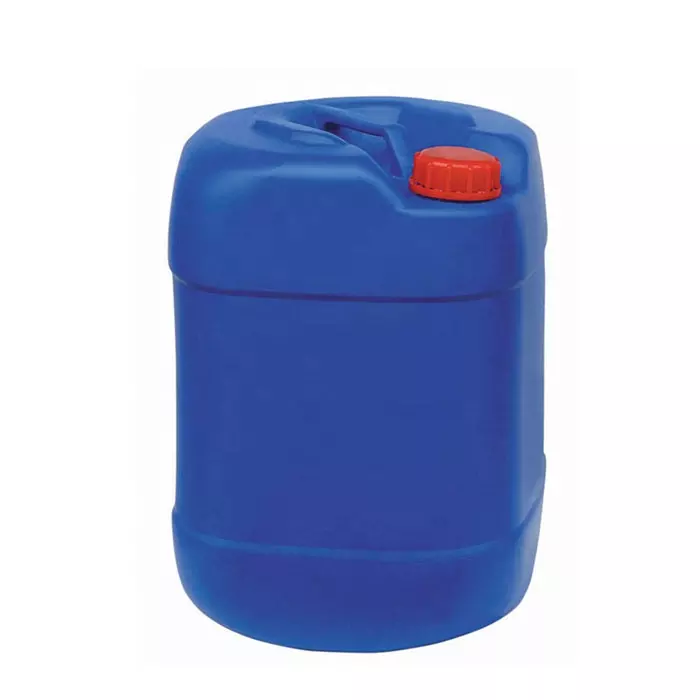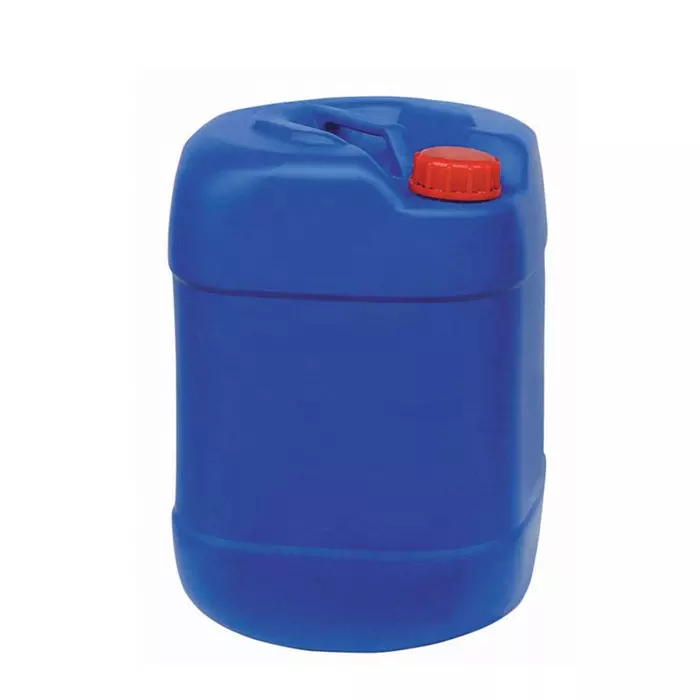There are many synthesis methods for polyaniline, but the commonly used synthesis methods are two categories: chemical synthesis and electrochemical synthesis.
(1) Chemical synthesis method Chemical synthesis method is to use oxidant as initiator to make aniline monomer oxidative polymerisation in acidic medium, the specific implementation methods are as follows.
Chemical oxidative polymerisation The chemical oxidative polymerisation of polyaniline is to make the aniline monomer oxidatively polymerised by oxidising agent under acidic condition. Protonic acid is an important factor affecting the oxidative polymerisation of aniline, which mainly plays two roles: to provide the pH value of the reaction medium and the form of dopant into the polyaniline skeleton to give it a certain conductivity. Polymerisation is carried out simultaneously with on-site doping, and polymerisation and doping are completed simultaneously. Commonly used oxidising agents are: hydrogen peroxide, dichromate, persulfate, etc. Its synthesis reaction is mainly affected by the type and concentration of protonated acid, the type and concentration of oxidant, the concentration of monomer and the reaction temperature, reaction time and other factors. The advantages of chemical oxidation polymerisation are that it can produce polyaniline in large quantities, with low investment in equipment, simple process, suitable for industrial production, and it is the most commonly used synthesis method at present.
Emulsion polymerisation Emulsion polymerisation is a method of adding an initiator into an acidic emulsion system containing aniline and its derivatives. Emulsion polymerisation has the following advantages: environmentally friendly and low-cost water is used as the heat carrier, and the product does not need to be precipitated and separated to remove the solvent; the synthesised polyaniline has a higher molecular weight and solubility; if large molecules of sulfonic acid are used as the surfactant, doping can be completed in a single step to increase the conductivity of the conductive polyaniline; polyaniline can be made into an emulsion that is directly usable, so that the subsequent processing does not need to use expensive or toxic organic solvents, simplifying the process and making it easier to produce polyaniline. Organic solvents, simplify the process, reduce costs, but also to overcome the shortcomings of the traditional method of synthesis of polyaniline insoluble and non-melting.
Microemulsion polymerisation Microemulsion polymerisation is developed on the basis of emulsion method. The polymerisation system consists of water, aniline, surfactant and co-surfactant. The microemulsion dispersed phase droplet size (10~100 nm) is smaller than that of normal emulsion (10~200 nm), which is very favourable for the synthesis of nanoscale polyaniline. The nano-polyaniline particles may not only solve the defects of difficult processing and moulding, but also combine the polymer electrical conductivity and the unique physicochemical properties of nano-particles, therefore, the microemulsion method has become a research hotspot in the field since the first report of synthesizing polyaniline particles with the smallest particle size of 5 nm using this method in 1997. Currently, conventional O/W microemulsions are used for the synthesis of polyaniline nanoparticles, and the commonly used surfactants are DBSA, sodium dodecyl sulfate, etc., with particle sizes of about 10-40 nm. reversed-phase microemulsions (W/O) are used for the preparation of polyaniline nanoparticles, which can obtain smaller particle sizes (<10 nm), and a more uniform distribution of the particle sizes. This is due to the fact that fewer aniline monomers are dissolved in the aqueous core of the reversed-phase microemulsion than in the oil core of the conventional microemulsion.
Dispersion polymerisation The aniline dispersion polymerisation system is generally composed of aniline monomer, water, dispersant, stabiliser and initiator. The medium before the reaction is a homogeneous system, but the generated polyaniline is insoluble in the medium, when it reaches the critical chain length from the medium precipitation, with the help of stabilizers suspended in the medium, the formation of a stable dispersion system similar to the polymer emulsion. This method is currently used in the synthesis of polyaniline research is far less mature than the above three implementation methods, less research.
Mature, less research.
(2) Electrochemical synthesis method The electrochemical polymerisation of polyaniline includes the following methods: constant potential method, constant current method, dynamic potential scanning method and pulse polarisation method. Generally An is polymerised in acidic solution at the anode. Electrochemical synthesis of polyaniline is the oxidative polymerisation of An at the anode in an electrolyte solution containing An, resulting in a polyaniline film adhering to the electrode surface or a polyaniline powder deposited on the electrode surface.Diaz et al. prepared polyaniline films by electrochemical methods.
At present, PANI electrochromic films are mainly prepared by electrochemical methods, but there are several drawbacks in the preparation of PANI electrochromic films by electrochemical methods, such as: the inability to prepare electrochromic films on a large scale; the poor mechanical properties of the PANI film; and the poor adhesion of the PANI film to the conductive glass substrate.
Extended Reading?
PC-37 – Amine Catalysts (newtopchem.com)
Dabco foaming catalyst/polyurethane foaming catalyst NE300 – Amine Catalysts (newtopchem.com)
DABCO EG/PC CAT TD 33EG/Niax A-533 – Amine Catalysts (newtopchem.com)
FASCAT4100 catalyst – Amine Catalysts (newtopchem.com)
T120 1185-81-5 di(dodecylthio) dibutyltin – Amine Catalysts (newtopchem.com)
DABCO 1027/foaming retarder – Amine Catalysts (newtopchem.com)
DBU – Amine Catalysts (newtopchem.com)
bismuth neodecanoate/CAS 251-964-6 – Amine Catalysts (newtopchem.com)
stannous neodecanoate catalysts – Amine Catalysts (newtopchem.com)
polyurethane tertiary amine catalyst/Dabco 2039 catalyst – Amine Catalysts (newtopchem.com)





